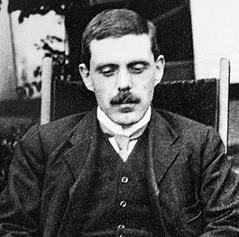Unraveling the Tapestry of David Lindsay’s Literary Career
David Lindsay (1876-1945), was a potentate in the sphere of literary fiction, science fiction, and fantasy novels. Born and raised in an industrious, Calvinist family in London, Lindsay’s Scottish heritage permeated his work and life. Honing his intellect at Colfe’s School in Lewisham, fate pulled him towards a different trajectory when financial constraints forced him into a career at Lloyd’s of London, instead of pursuing university education.
A Disruption in Path Paved the Way to Literature
In a dramatic turn of events, Lindsay found himself embroiled in World War I. It was after these challenging episodes that he relocated to Cornwall with his spouse. Here, his life’s purpose was recalibrated, and he plunged into full-time writing – a pursuit that paradoxically offered an escape from and a reflection of the world around him.
Commencement of an Illustrious Writing Career
David Lindsay made his authorial debut in 1920 with the release of his first novel, A Voyage to Arcturus, establishing himself as a versatile writer with a unique voice. This marked the advent of a cavalcade of enthralling creations.
Books in order: A Chronological Exploration of David Lindsay’s Works
The journey of exploring David Lindsay’s imaginative realm is best undertaken by delving into his books in order of when they were originally unveiled. This chronological exploration provides avid readers with a comprehensive understanding of the evolution and growth of his ideas, themes, and narrative style.
Publication Order of Standalone Novels
| A Voyage to Arcturus | (1920) | |
| The Haunted Woman | (1922) | |
| Sphinx | (1923) | |
| Adventures of Monsieur de Mailly | (1926) | |
| Devil’s Tor | (1932) | |
| The Violet Apple & The Witch | (1976) |

